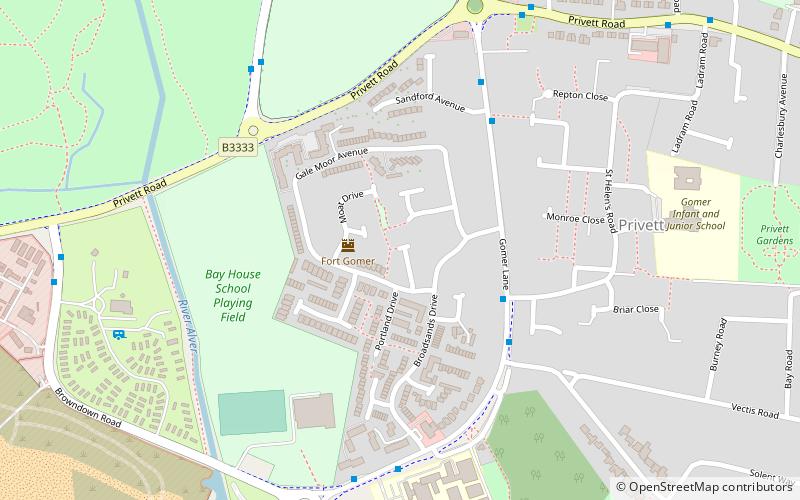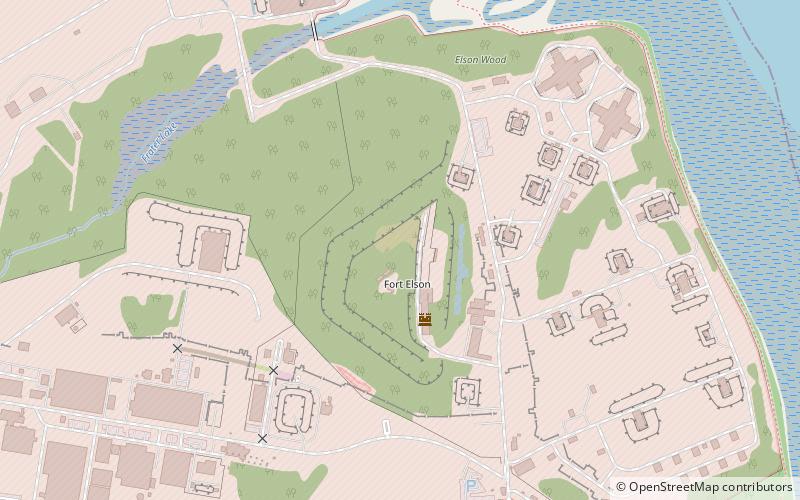Portsmouth: Forts and Castles
Places and attractions in the Forts and castles category
Categories
- Museum
- History museum
- Forts and castles
- Military museum
- Historical place
- Specialty museum
- Park
- Church
- Reportedly haunted
- Concerts and shows
- Marina
- Sailing
- Shopping
- Harbor
- Sport venue
- Sport
- Island
Portchester Castle
Portchester Castle stands as a historical sentinel on the southern coast of England, in the quaint village of Portchester, a suburb of the city of Portsmouth. This medieval fortress is an enduring testament to Britain's storied past, offering visitors a chance to step...
Southsea Castle
Museum inside 1545 coastal fortress Southsea Castle stands as a testament to England's storied past, a fortress steeped in history located in the coastal city of Portsmouth. Constructed in 1544 under the orders of King Henry VIII, this historic edifice was part of a series of fortifications built...
Round Tower
The Round Tower is a fortification at the entrance to Portsmouth harbour. It is a Grade I listed building.
Square Tower
The Square Tower is one of the oldest parts of the fortifications of Portsmouth, England. It is a Grade I listed building.
Lumps Fort
Lumps Fort is a disused fortification built on Portsea Island as part of the defences for the naval base at Portsmouth.
Fort Gilkicker
Fort Gilkicker is a historic Palmerston fort built at the eastern end of Stokes Bay, Gosport, Hampshire England to dominate the key anchorage of Spithead.
Fort Widley
Fort Widley is one of the forts built on top of Portsdown Hill between 1860 and 1868 on the recommendation of the Royal Commission on the Defence of the United Kingdom.
Fortifications of Portsmouth
The fortifications of Portsmouth are extensive due to its strategic position on the English Channel and role as home to the Royal Navy. For this reason, Portsmouth was, by the 19th century, one of the most fortified cities in the world.
Fort Cumberland
Fort Cumberland is a pentagonal artillery fortification erected to guard the entrance to Langstone Harbour, east of the Dockyard of Portsmouth on the south coast of England.
Portsdown Hill
Portsdown Hill is a long chalk ridge in Hampshire, England. The highest point of the hill lies within Fort Southwick at 131m above sea level.
Fort Blockhouse
Fort Blockhouse is a military establishment in Gosport, Hampshire, England, and the final version of a complicated site. At its greatest extent in the 19th century, the structure was part of a set of fortifications which encircled much of Gosport.
Browndown Battery
Browndown Battery, also referred to erroneously in some sources as Browndown Fort, is a former military coastal defence fortification and base on the Southern shoreline of England in the county of Hampshire. First erected in the mid-1840s, the battery was continuously modified until disarmed in 1905/6.
Hilsea Lines
The Hilsea Lines are a line of 18th- and 19th-century fortifications built at Hilsea to protect the northern approach to Portsea Island, an island off the southern coast of England which forms the majority of the city of Portsmouth and its key naval base.
Fort Monckton
Fort Monckton is a historic military fort on the south-east shoreline of the Gosport peninsula, Hampshire. Built on the ruins of Haselworth Castle to protect Portsmouth Harbour at the start of the American War of Independence, it was rebuilt in the 1880s as a Palmerston fort.
Fort Gomer
Fort Gomer was one of the Palmerston Forts, in Gosport, England, the southernmost and first-built Polygonal fort in the defence line to the west of Gosport. It was located on land immediately to the west of the present Gomer Lane.
Fort Southwick
Fort Southwick is one of the forts found on Portsdown Hill, which overlooks the naval base of Portsmouth in the county of Hampshire, England.
Fort Elson
Fort Elson was one of the early Palmerston Forts, in Gosport, England, the northernmost polygonal land fort in the defence line to the west of Gosport. It was located on land immediately to the south of Elson Creek, to which it was connected by a sluice.
Fort Rowner
Fort Rowner is one of the Palmerston Forts, in Gosport, England. Built circa 1858 as part of the outer defence line for Gosport along with Fort Brockhurst and Fort Elson to the North East and Fort Grange and Fort Gomer to the South West.
Fort Grange
Fort Grange is one of the Palmerston Forts, in Gosport, England. After Gomer and Elson forts had been approved in 1852, further consideration led to a decision to fill the gap between them by three more forts, and Grange is the most southerly of the three.
Map



















